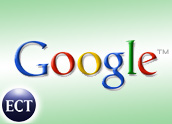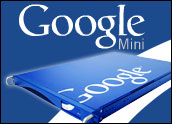
Google has agreed to acquire Newport Beach, Calif.-based dMarc, which develops digital applications for the radio broadcast industry, for US$102 million in cash.
DMarc connects advertisers directly to radio stations through its automated advertising platform. Its technology is designed to simplify the sales process, scheduling, delivery and reporting of radio advertising, enabling users to more efficiently purchase and track their campaigns.
Conquering New Territory
Google is committed to exploring new ways to extend targeted, measurable advertising to other forms of media, said Vice President of Advertising Sales Tim Armstrong.
“We anticipate that this acquisition will bring new ad dollars and accountability to radio by combining Google’s expansive network of advertisers with dMarc’s talented team and innovative radio-advertising technology,” he added. “We look forward to working together to continue to grow and improve the ecosystem of the radio industry.”
A Billion-Dollar Opportunity
Radio-advertising revenues will climb to $16.1 billion in 2006, according to Universal McCann, a forecast that suggests Google is making another smart move.
This deal gives the search giant another geo-targeting option to attract advertisers, Kelsey Group analyst Greg Sterling told the E-Commerce Times. It also allows the company to further diversify its revenues.
“Google has been testing print advertising, and the speculation is the company wants to get into TV. So this makes sense,” Sterling said. “Ultimately Google wants to be a comprehensive ad buying platform. This acquisition is consistent with that strategy.”
Future Plans
DMarc’s technology benefits broadcasters by automatically scheduling and placing advertising, Google noted, which means an increase in revenue and a decrease in the costs associated with processing advertisements.
In the future, Google plans to integrate dMarc technology with the Google AdWords platform, creating a new radio-ad distribution channel for Google advertisers. That is where Google may run into challenges.
“It remans to be seen how effectively Google can integrate AdWords into radio broadcasting,” Sterling said. “That is a bit of a risk, but this is not a homegrown product. It is an acquisition of a company that is successful in this space. From that standpoint, the risk is minimal.”
Contingent Payments
In addition to the $102 million in cash, Google will make contingent cash payments from time to time if certain product integration, net revenue and advertising inventory targets are met over the next three years.
The maximum amount of potential contingent payments is $1.136 billion over the next three years. Since these will be based on the achievement of performance targets, Google said the actual amounts paid may be substantially lower.
“Google gets access to this technology and they pay for it over time with an assurance that dMarc continues to perform,” Sterling said. “This deal structure probably also keeps the personnel in place. There’s a big payout for these guys if they perform.”
Google anticipates that the acquisition will close in the first quarter 2006.
Heading North
Google is not only heading onto the airwaves — it is also heading north. Tuesday’s acquisition follows Monday’s multi-year search and advertising partnership with Canada.com, the leading Canadian general news and information online site.
Canada.com and Google will share revenue from ads served.
“With almost three million unique visitors a month, Canada.com provides an excellent media vehicle for our advertisers who are looking to penetrate the Canadian marketplace,” said Wendy Muller, head of Canada ad sales and operations at Google. “This alliance will broaden our reach into thisimportant market, and maintain Google’s ongoing strategy of partnering with market leaders.”






















































Social Media
See all Social Media